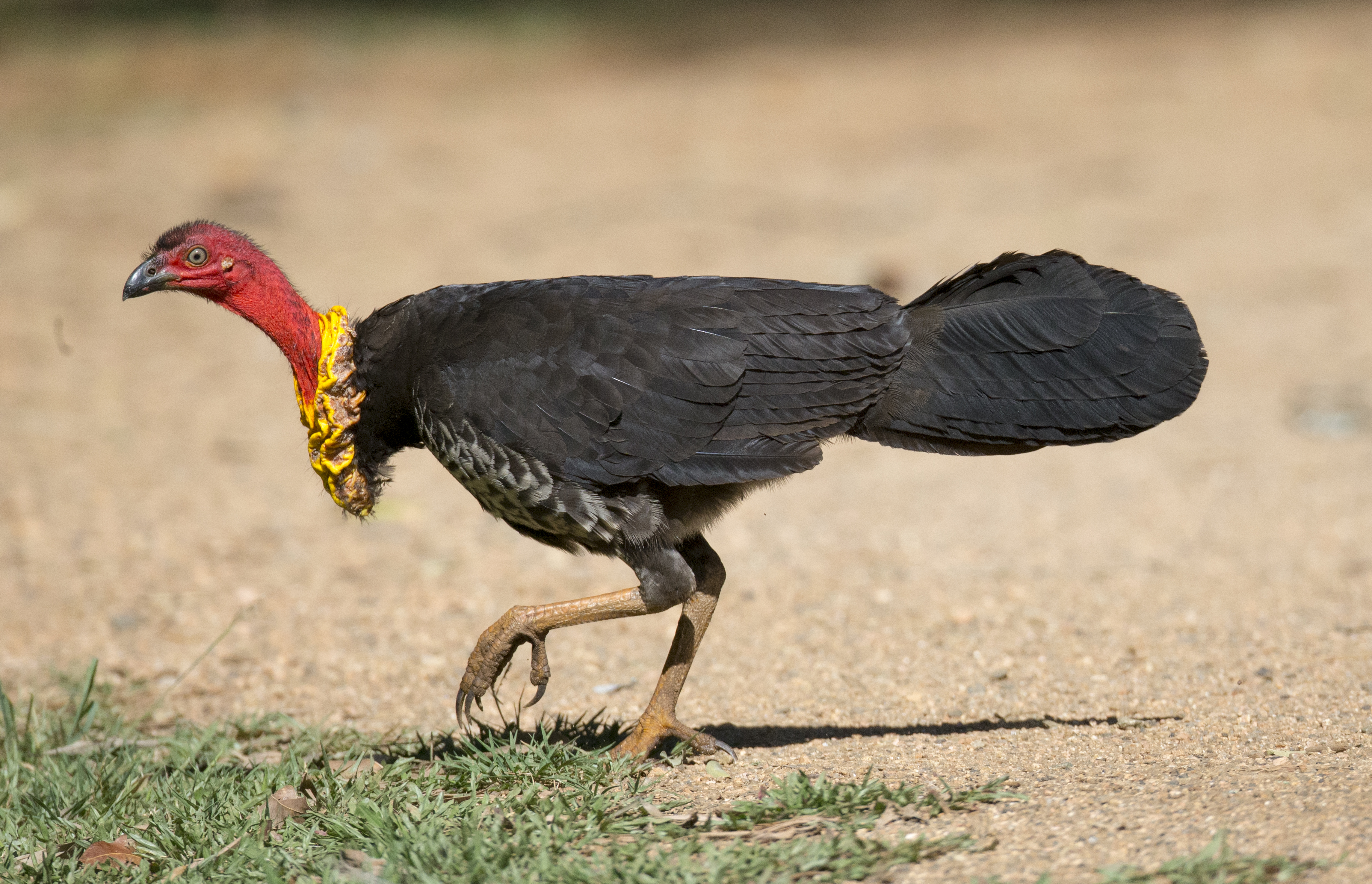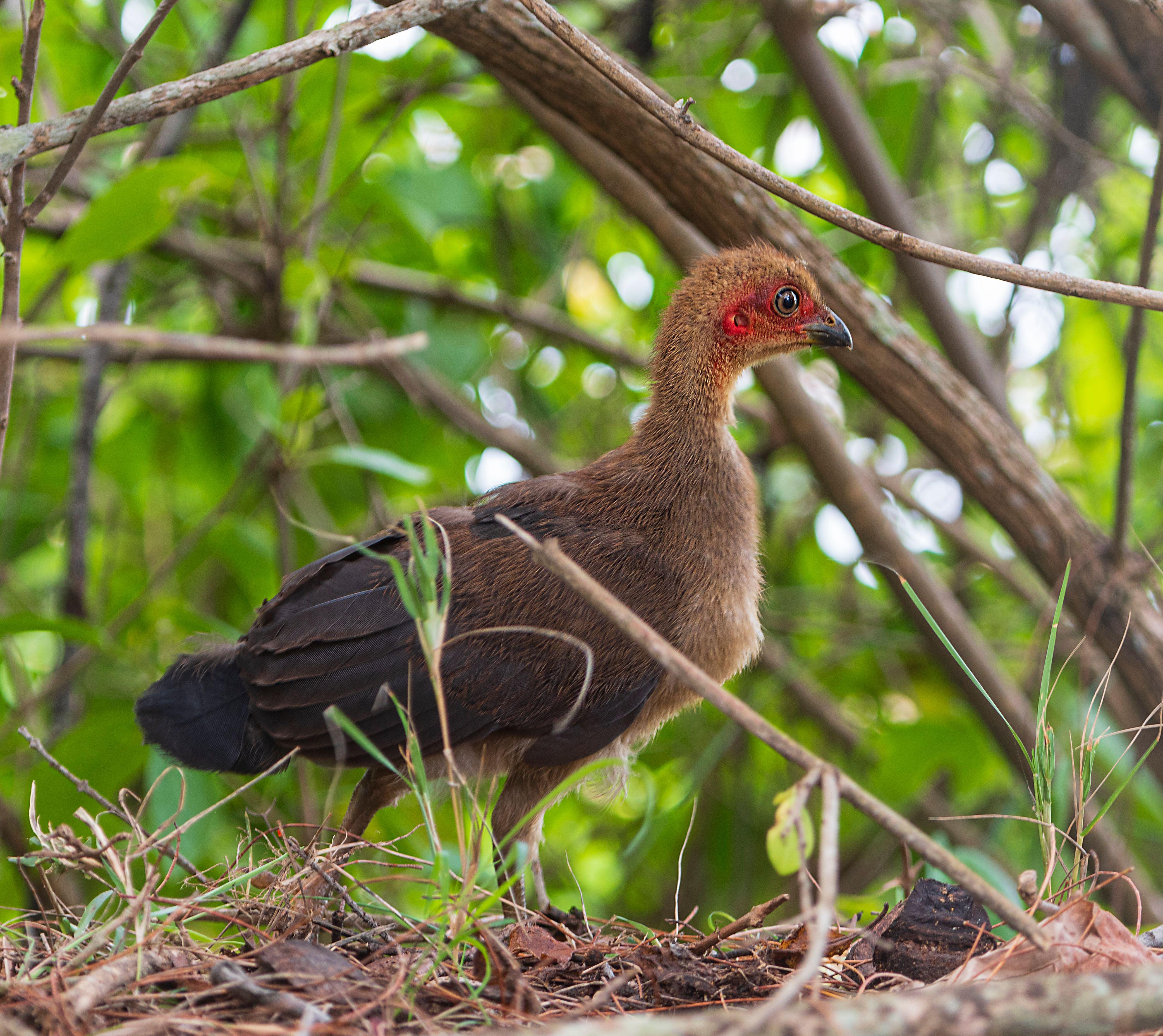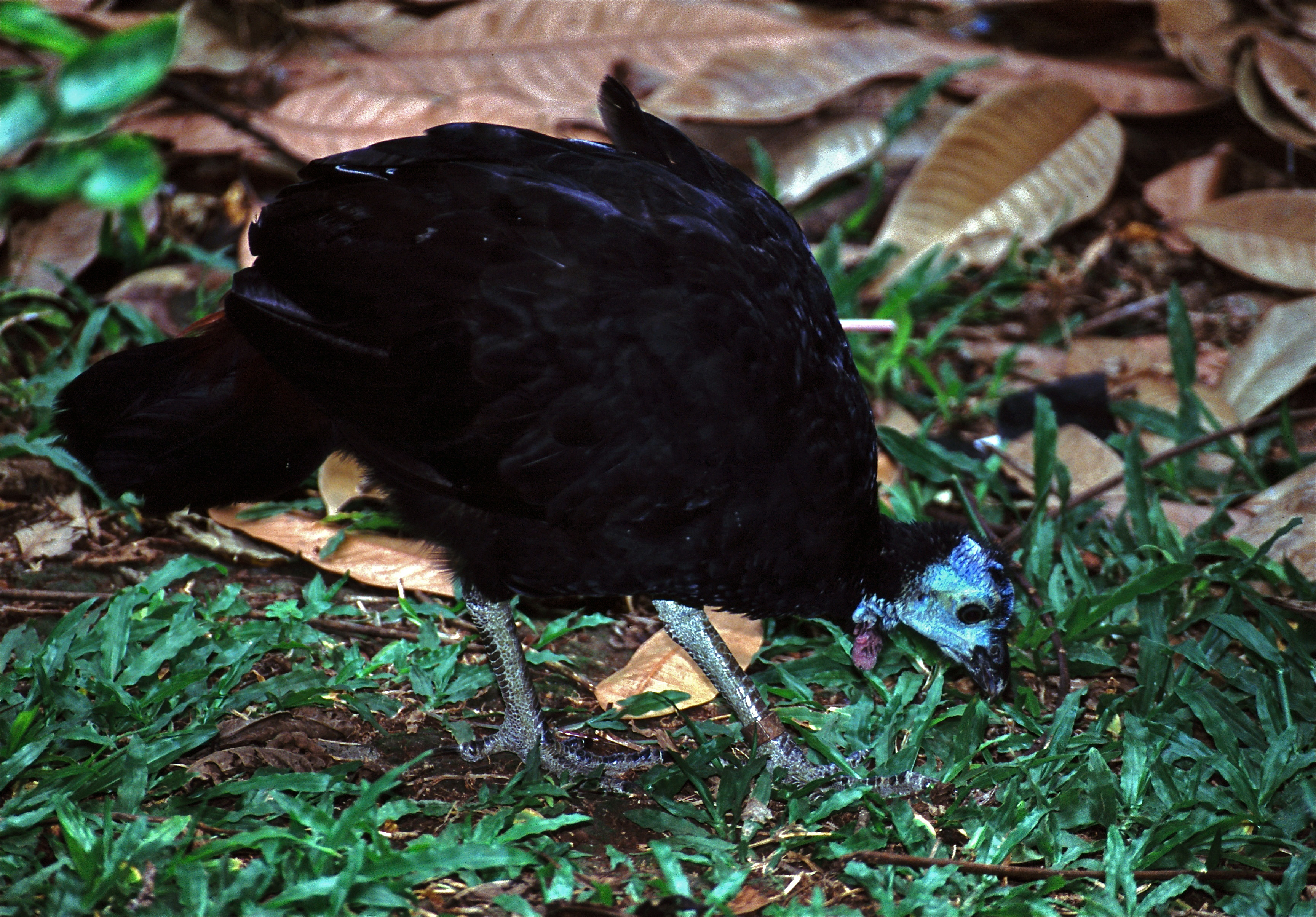Brushturkey is a bird that incubates its eggs in large mounds of earth. Brushturkeys are a kind of mound bird (also called megapode) found in Australia, Indonesia, and Papua New Guinea. There are six species of brushturkeys. The Australian brushturkey is also known as the gweela. Brushturkeys are sometimes hunted for food. Brushturkeys look somewhat similar to turkeys, but the two kinds of birds are not closely related.
Brushturkeys have strong, thick legs and wide feet. Their feathers are black or brown. They have few or no feathers on their head and neck. Australian brushturkeys have a red head and neck. In other species, the head and neck may be pink, blue, dull yellow, gray, or black. Adults of most species have wattles on the head and chest. A wattle is a fleshy skin growth. Adult males have larger wattles than do females. Male brushturkeys are larger than females. The largest brushturkey is the Australian brushturkey, which weighs about 5 pounds (2.3 kilograms) and grows up to 28 inches (70 centimeters) long. 
Brushturkeys eat insects, worms, snails, seeds, fruits, berries, and small animals such as frogs and mice. They find food by using their feet to dig through leaves, dirt, and rotten wood. They forage for food in the morning and evening. Brushturkeys spend most of their time alone, but they roost in groups at night and during the hottest part of the day. They fly only in short bursts.
The breeding season for brushturkeys is May through February. In May or June, male brushturkeys begin to build a large mound of damp earth and leaves. They use their legs and feet to rake their materials into a pile. The mound can be up to 3 feet (1 meter) tall and 16 feet (5 meters) in diameter. The male spends over a month building this incubation mound. The decomposing plant material in the mound keeps eggs warm as they develop. 
Females lay one egg at a time in an incubation mound. Before laying an egg, they spend time inspecting the mounds. They prefer mounds that are large and warm. A female brushturkey lays 15 to 27 eggs in one breeding season. She may lay all her eggs for the season in the same mound, or she may lay eggs in multiple mounds.
Male brushturkeys maintain mounds for several months. They defend their mound from other males, who may attempt to steal it. They add, mix, and remove material to keep the mound’s temperature stable.
Brushturkeys do not take care of their chicks. The chicks hatch on their own, as deep as 3 feet (1 meter) within the incubation mound. They use their strong feet and legs to break out of the eggshell. They rest for several hours while their lungs get used to breathing. Then they dig to the surface using their feet. It takes about 40 hours for a chick to emerge from the mound. They hatch with fully formed feathers and can fly immediately. They mature in about 10 months. 
Brushturkeys live in rain forests and other woodlands. They are also found in scrubland and in some urban areas. Australian brushturkeys living in populated areas sometimes take over people’s compost piles to use as incubation mounds.
The Australian brushturkey is found along the northeast and east coasts of Australia. They also live on Kangaroo Island, where they were introduced by humans. In Indonesia and Papua New Guinea, brushturkeys live on the large island of New Guinea and on nearby islands. The Waigeo brushturkey is found only on Waigeo Island in Indonesia. 
See also Bird (Birds of Australia and New Zealand); Mallee fowl; Mound bird ; Turkey
